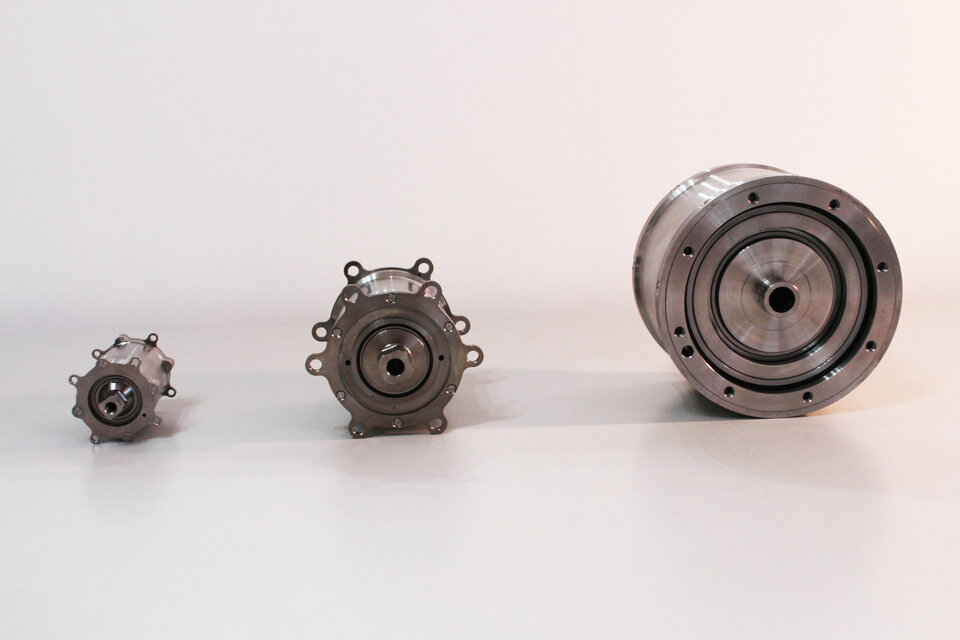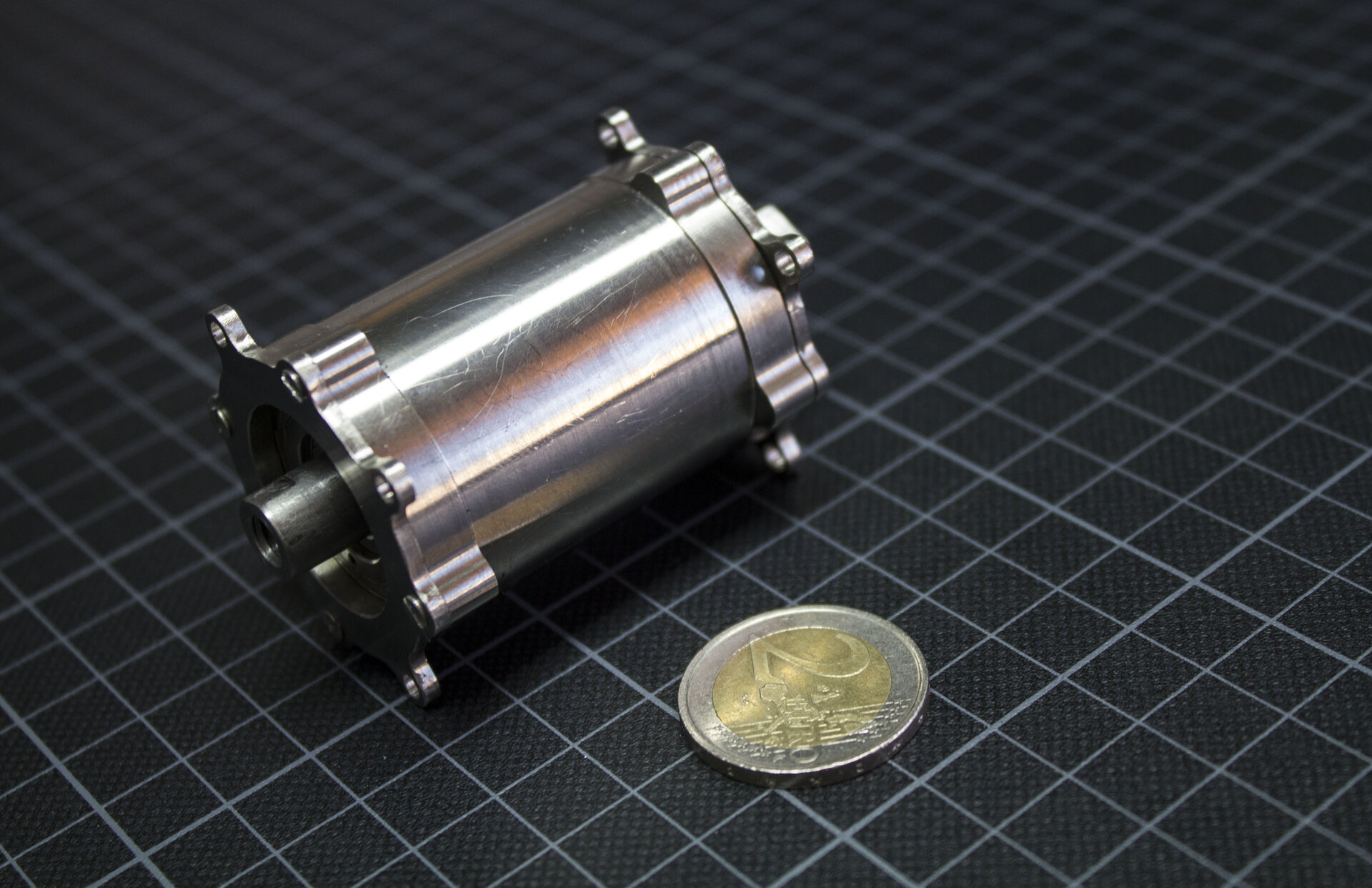Long Life Efficient Contactless Magnetic Gearbox for Space (Optimagdrive)
| Programme: | ITI | Achieved TRL: | 4 |
| Reference: | B00016847 | Closure: | 2017 |
| Contractor(s): | MAG SOAR (ES) | ||
The technology is highly relevant for space mechanisms applications, where demand for long-life, operation at wide temperature range, cleanliness, low friction and limited backlash are critical requirements. Actual solutions, drives and planetary gearboxes, cannot fully meet these requirements: design compromises and specific developments are often needed.
Objective(s)
Design, manufacture and experimentally test three prototypes of Contactless Magnetic Gearboxes for space. OPTIMAGDRIVE project has aimed to provide a significant advance in the understanding of Magnetic Gearboxes and to demonstrate competitive performance in comparison to other high reduction ratio gearbox technologies.)

Achievements and status
•Properties of co-axial Magnetic Gearboxes have been deeply investigated.
•Design models experimental results, oriented to space applications, were in very good agreement with the simulations models set-up in this project. Test environment temperature ranging from -40°C to 70°C.
•A great increase on the performance of the technology has been demonstrated with reduction ratios up to 75 in a single stage and 440 in two stages, with torque densities up to 100 kNm/m³ and efficiencies up to 92%.
•OPTIMAGDRIVE demonstrated very good performance in terms of output torque and efficiency even at very low temperatures, showing a great potential for their use in cryogenic environments were mechanical gearboxes suffer from significant drawbacks.
Benefits
The Magnetic Gear technology developed by MAG SOAR can enhance the performance of space drivelines, in terms of life (no sliding contacts and wear), reliability (fewer moving parts), efficiency (no friction forces), extended temperature range (no oils or greases), and accuracy (no backlash). A design approach oriented towards miniaturization resulted in compact gearbox solutions, with torque/mass densities in line or superior to dry-lubricated planetary gearboxes.
Next steps
The next step for the technology is to generate the qualification models to be tested in a space relevant environment and oriented to specific space applications. The next activity shall combine Contactless Magnetic Gearboxes technology with other elements composing a mechanism, e.g. motors in order to analyze possible synergies.


